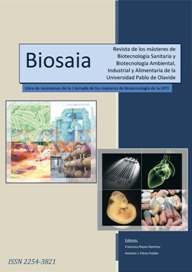An approach from fission yeast to study mammalian meiosis
Palabras clave:
Aneuploidy, Fertility, Fission yeast, MeiosisResumen
Motivation: Nowadays, the major cause of human infertility is woman age-related infertility. The genetic quality of female gametes drastically decreases with age due to the increase of aneuploidy, result of a deficient meiosis, which severely impairs embryo development and most frequently leads to miscarriage. Because studying human meiosis is hampered by technical, biological and ethical constraints, research is mainly carried out in various model organisms. Among these, the fission yeast Schizosaccharomyces pombe has served it well, but species-specific differences keep it distant from the human case. Here, a novel fission yeast model whose meiosis approaches to that of mammals, is used to study this process aiming to obtain more representative results that can be better extrapolated to human.
Methods: Strains are generated via cross and tetrad analysis and cultured according to standard protocols. Meiosis is monitored via live timelapse fluorescence microscopy, using fluorescently tagged proteins to follow subcellular structures.
Results: In this model, virtually all meiotic cells show severe defects in chromosome segregation in both meiosis I and II, leading to disruption of the whole gametogenesis. However, although nuclear divisions are not effective, DNA masses experiment poleward segregating movements, unveiling an insufficient but maintained functionality in this aberrant meiosis.
Conclusions: Despite meiosis progression is disrupted in this model, there exists a conservation of certain functionality. Interpreting this meiosis as a hybrid between yeast and mammal cases, these findings reflex the discrepancies between higher and lower eukaryotes meiosis, probably being these mismatches responsible for the observed defects. Also, this scenario opens up the possibility of studying the minimal, basic principles of meiosis in this model to later extrapolate them up to mammals and even humans.




